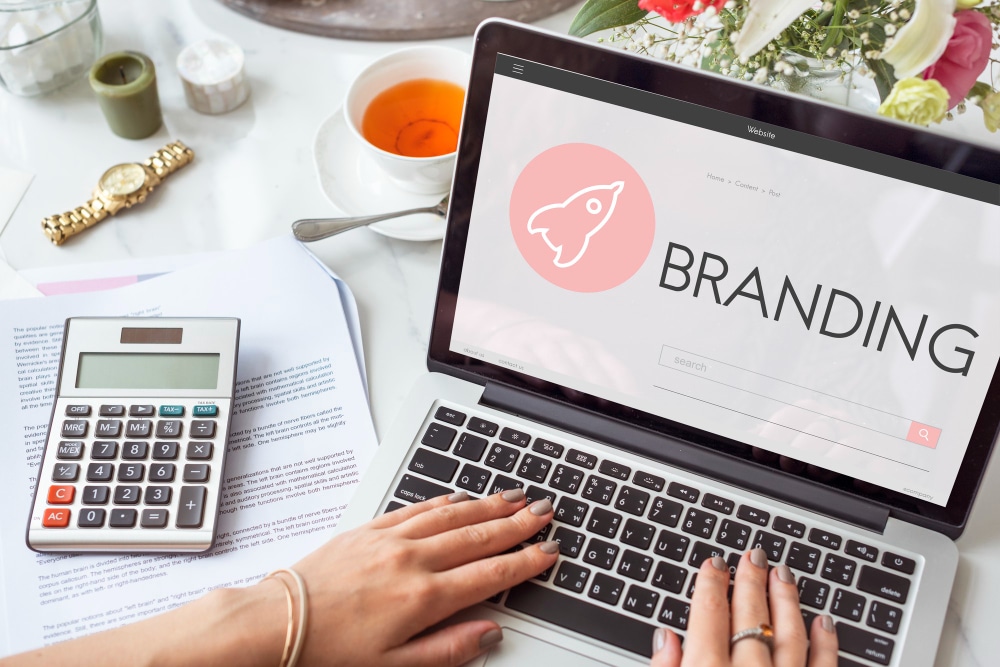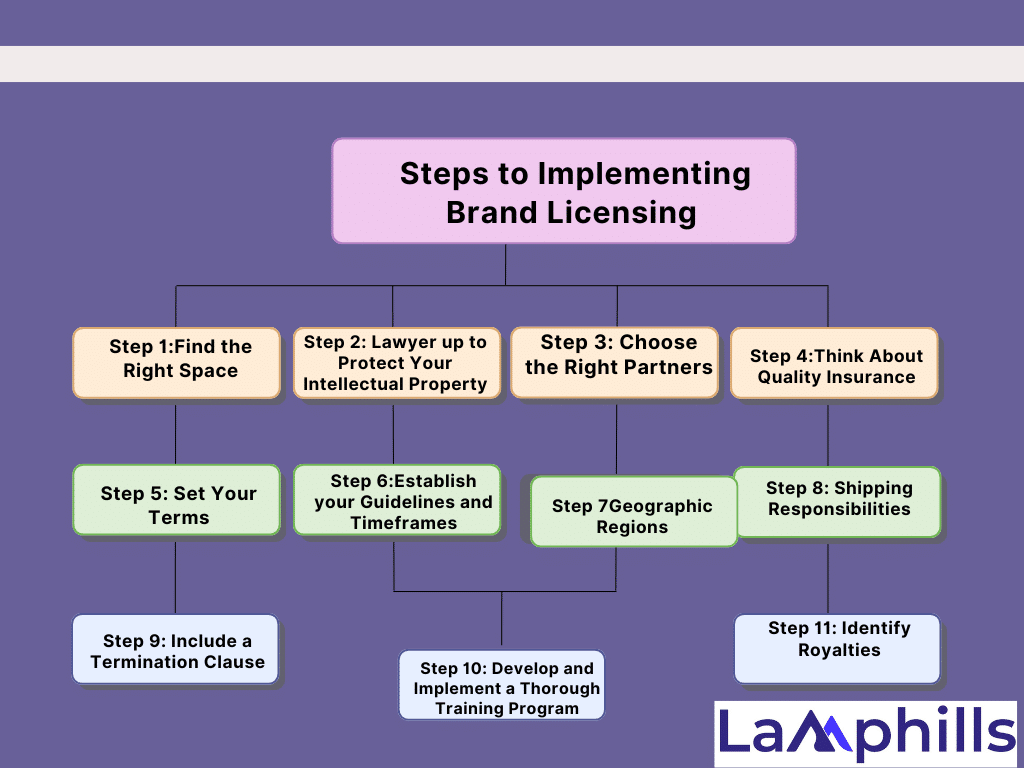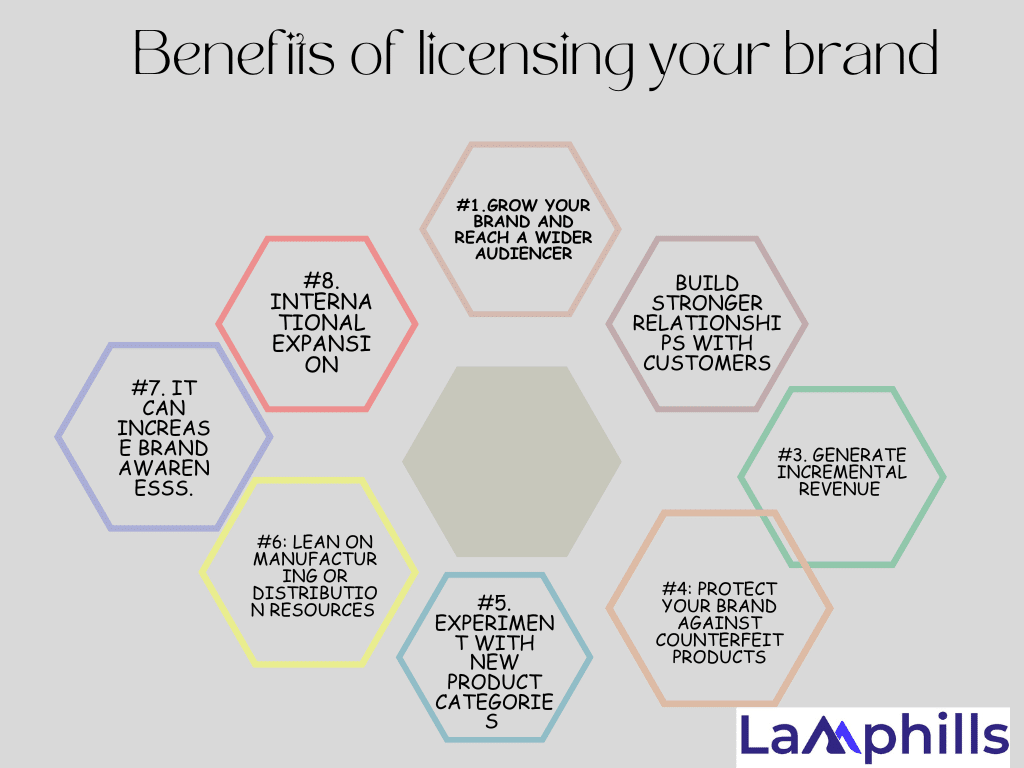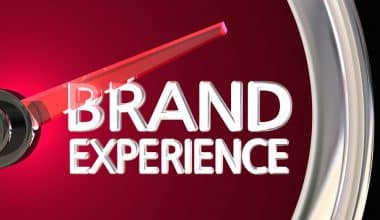Have you ever thought of how your favorite childhood characters appear on everything from apparel to toys to cereal boxes? It’s all down to the magic of brand licensing, a powerful approach that introduces treasured brands to new markets and goods. However, like with any creative form, mastering brand licensing needs elegance, planning, and a sharp eye for opportunities.
Now Imagine you’re walking down the aisles of your local supermarket when you notice your favorite superhero plastered on a box of cereal. You can’t help but smile as you recall the many hours you spent as a child playing make-believe. That’s the beauty of brand licensing: it appeals to our yearnings and emotions, forming a bond between consumers and businesses that goes beyond basic products.
Key Takeaways
- Brand licensing allows companies to lease their intellectual property (IP), such as trademarks, logos, or characters, to other businesses. This strategy enables the creation of new products and revenue streams without the licensor having to invest in production or marketing efforts.
- Successful brand licensing hinges on selecting the right partners who align with the brand’s values and vision. This collaboration helps brands penetrate new markets, reach wider audiences, and explore new product categories.
- Key performance indicators (KPIs) such as sales revenue, market share, and brand awareness are essential for evaluating the success of licensing efforts.
What is brand licensing?

Brand licensing is the process of allowing another company to use your company’s intellectual property (IP). Here, brand owners rent out their patents, software, or personalities to other companies. Licensees can resell the IP at a higher price or create goods featuring the IP. In either case, the licensor receives a kickback—either a percentage commission or a one-time fee—as compensation for granting the license. Trust me, licensing is one of the most widely used means of brand extension, largely because it allows a brand to achieve new product introductions without taking on the production and marketing efforts.
Barbie is a real-world example of a brand licensing contract. The global brand is well-known around the world, and it has licensing agreements with a wide range of enterprises, including shops. One such retailer is Shopify merchant The Oodie, which sells limited edition Barbie items.
In simpler terms, brand licensing is more than just putting a logo on a product and calling it a day. It’s about extending the essence of a brand into new territories and leveraging its existing equity to drive growth and profitability.
How Brand Licensing Works
Licensing is the process of leasing or licensing a brand’s image to manufacturers who wish to sell products connected with the licensor’s brand. Licensing consists of two components: the licensor (the entity licensing their brand) and the licensee (the entity paying for brand rights).
Brand owners rent a trademarked or copyrighted entity (also known as a property or intellectual property) to use in association with a product, service, or marketing campaign. The property in question could be a logo, graphic, slogan, character, name, or any combination of these components. IP (intellectual property) can refer to anything, including:
- sports clubs and players
- museums
- fashion brands
- television, book, or film characters
- book or film franchises
Licensing brands can be a mutually beneficial strategy. As a brand owner, it can help you gain a new consumer base, market sector, or distribution channel. From the perspective of a licensee, profiting from an already established brand is preferable to breaking into a crowded market from the ground up. Most importantly, customers are delighted because they can continue to be loyal to businesses they already know and trust while also engaging with them in new and exciting ways.
Steps to Implementing Brand Licensing

Now let’s speak about how to put them into practice. The first stage is to:
Research, research, research.
It is advisable to develop a comprehensive plan outlining what you seek in a potential license. Assess potential licenses to determine if they are a good fit. Are your customers interested in this product? Does your brand’s equity apply to this product? Will this licensee provide value? The Global Licensing Group is the world’s top trade show organizer and media partner, facilitating connections between brands, manufacturers, and retailers through industry-leading events, relevant information, and data services. What is their major goal? To promote corporate expansion through consumer items and brand extensions. Then,
#1. Find the Right Space
This comes after research – identify your place in the market, somewhere, you’ll command higher profit margins.
#2. Lawyer up to Protect Your Intellectual Property
Ensure your brand’s assets are trademarked and protected from the very outset.
#3. Choose the Right Partner
Like any other relationship, find a partner you want to be with for a long time. Analyze the level of commitment—financial and otherwise—and gauge how well their investment matches your objectives.
#4. Think About Quality Insurance
When you give another company permission to use your name, logo, or likeness on their products, you’re taking a calculated risk. This is because your brand is automatically associated with—and, to some extent, held accountable for—the quality and content of those products. That’s why it’s vital to include quality assurance terms in your licensing agreement. Your brand identity and reputation are at stake. Quality assurances might include restrictions for the licensee around:
- Distort images (like your brand logo)
- Changing your brand’s fonts or colors
- Adding new code to the licensed software
To protect your brand image, in your agreement, clearly define what’s being licensed (i.e., a video game character) and any restrictions on how a licensee can use it. For example: “Licensee cannot use our IP to manufacture or sell alcohol-related products.”
#5. Set Your Terms
Draft a licensing contract and establish your flat fee. An attorney or licensing agent will help ensure your contract includes all it needs and is legally binding.
#6. Establish your Guidelines and Timeframes
How long have you been granted the license? When it comes to product categories, price ranges, and distribution channels, determine the extent to which you are willing to extend your brand.
#7. Geographic Regions
If you’re working with several licensing partners, clearly define the regions they’re allowed to use your IP in. It’ll prevent them from competing with one another and causing arguments.
If you’re outside of the US, you generally can’t sell items in the countries where the IP is held. So, if a person in England is making a game and you sign a contract with them, you likely aren’t going to be able to sell in that country, because they already have somebody who’s doing it locally.
In addition, certain countries’ mail systems also play a role in agreeing on geographic regions. Sometimes clients will ask you not to sell in certain countries because you spend so much time trying to make sure you get their items.
#8. Shipping Responsibilities
Consider shipping responsibilities in your brand licensing agreement. Who will be responsible for picking, packing, and shipping an item to a customer? Where will the inventory be held: at your warehouse, the licensee’s, or a third-party logistics (3PL) partner’s distribution center?
Ideal terms look like this: “We are going to send you X amount of items to send to Y location.” And that’s it. When you get into importing specifications and requirements, it becomes complicated, especially when you’re trying to fulfill them.
#9. Include a Termination Clause
Every contract must have a termination clause that explains:
- When the licensing agreement ends
- How either party can end the contract prematurely?
- The notice required to do so
You should also explain whether the brand licensing deal auto-renews after time is up—and if so, at what price. If you’re entering into a two-year contract with a licensee, for example, you may have a clause stating that if the deal is automatically renewed, your royalty fee increases from 10% to 12% of all licensed product sales.
#10. Develop and Implement a Thorough Training Program
This will allow licensees to guarantee that all licensed products adhere to your brand’s standards during their development and marketing processes.
#11. Identify Royalties
One of the biggest benefits of licensing your brand is the extra stream of revenue you build. Licensees make money off the back of your intellectual property. So, in your brand licensing agreement, go into extensive detail on the structure of your financial compensation for licensing your business’s IP.
Examples of licensing agreements
To illustrate the power of brand licensing, let’s take a look at a few real-world examples of brands that have executed successful licensing strategies. My favorite example is the collaboration between,
#1. The Walt Disney Company
Disney does not produce every t-shirt or coffee mug featuring its characters. Since the empire’s initial licensing agreement in 1933, thousands of other firms have inked deals with Disney to use its characters, series names, music, and other trademarks. Those businesses handle specifics such as product development and manufacturing. These license deals explain why Disney appears to be everywhere. It is the world’s leading licensor, with licensees and direct-to-consumer sales worth $61.7 billion by 2022.
Shopify merchant A Birthday Place tapped into this brand licensing opportunity, offering a line of Frozen-branded party goods on its website. Similarly, Sun-Staches, which also sells wholesale to retail stores, has its own frozen-licensed product.
#2. Netflix
Netflix is the biggest streaming platform in the world. More than 77 million customers pay for access to its on-demand library of content. And with its series and movies, Netflix has amassed dedicated fan bases around several of its “sub-brands” or programs.
Shopify merchant Fugitive Toys, for example, has several licensed products for sale on its website and in its California stores. Among them are Stranger Things figurines.
But Fugitive Toys doesn’t just do brand licensing with Netflix—it also, like A Birthday Place and SunStaches, has licenses from Disney, Pokémon, and others.
#3. Funko
Funko has redefined what a collectibles company can do in the marketplace and proven that retail is very much alive, so long as you have what’s in demand. Aptly described as “the fast fashion of pop culture” by Brian Mariotti, chief executive officer, of Funko, the company deals primarily in bringing beloved licensed properties—from entertainment, sports, and music to familiar, nostalgic corporate brands and mascots—to market largely via its Pop! vinyl figurines range, a core product offering and the company’s No. 1 seller.
#4. V&A
The V&A works with licensees across Europe, the U.S., Japan, China, and South Korea to spread the core values of the institute: making art accessible to all. It’s this core theme that drives the V&A’s work with designers and licensees to create valued, consumer-focused products.
Working with leading interior experts, craftsmen, designers, and fashion creators, the V&A has produced innovative products such as children’s fashion lines with Little House of Hackney, paperback products based on English chintz fabrics with Pimpernel Press, tableware products with Caspari, Japanese textile-inspired needlepoint kits with Ehrman Kits, and a range of gardening tools with Wild & Wolf.
#5. Ford Motor Company
Whether it’s apparel, toys, novelties, or collectibles, the licensed product categories for auto brands run the gamut. Iconic, classic American brand Ford and its top-rated licensing program is successfully exploiting all categories.
“Ford Brand Licensing has a process in place to review license applications and also works with a variety of internal teams to determine key categories and growth opportunities in which we’d like to seek new partners,” says Casie Ocaña, global brand licensing manager, Ford Motor Company. “When it comes to picking those partners, Ford looks to ensure the company shares the same values as well as passion for our products and consumers.”
Benefits of Licensing Your Brand

If you want to build your business quickly, brand licensing could be the answer. It might be difficult to locate the correct licensing business and agreement that allows for expansion while maintaining a brand’s image and reputation. While it is uncommon to reap the benefits of brand licensing without some risk, I’ve developed a list of ways in which brand licensing can help start a brand on the growth path.
#1. Grow your Brand and Reach a Wider Audience
Licensing your brand entails forming a collaboration with another business. One of the primary advantages of these agreements is their ability to reach a larger audience.
Working with another brand grants you immediate access to its customers and audience, and vice versa. Whether you’re the licensor or the licensee, both companies share their consumers, allowing them to grow and expand into a new age group, geographic area, and so on. Working with existing licensees makes market entry easier.
#2. Build Stronger Relationships with Customers
As your brand expands, so do your clients’ desires and expectations. Regardless of your company’s size, it can be difficult to build a product portfolio in a meaningful way that meets client expectations.
Licensing your brand is one way to connect your production and product design skills. What was the result? Driving repeat sales and delivering the products your customers want.
“The licensed product spreads faster on social media,” says Brian Garofalow, Igloo’s Chief Marketing Officer. “When people buy something, they enjoy sharing it. That is a big aspect of our company and our positioning: we are enjoyable. It makes a lot of sense when we do enjoyable licenses, because it brings smiles to people’s faces, and they love showing off their coolers.”
#3. Generate Incremental Revenue and Diversify your Revenue
As the licensor in a brand licensing agreement, you will normally get royalties for each licensed product sold. Royalties are unlikely to increase your company’s revenue from $1,000 to $1 million, but they can be an effective method to add incremental value and diversify your brand’s revenue streams. Depending on the licensed item, this additional revenue can even help to smooth out seasonal fluctuations in your retail store.
#4. Protect your Brand Against Counterfeit Products
If you’ve ever visited a public market, you’ve likely seen unauthorized and counterfeit products being sold unlawfully. Think about those $20 “Coach” handbags or $10 “Ray-Ban” sunglasses. When a brand becomes popular enough, counterfeiters are seldom far behind. Licensing your brand can help you stay ahead of the curve. One of the first steps in the brand licensing process is to secure your intellectual property. It also safeguards your brand’s reputation by establishing clear terms on discounts and other issues.
This proactive approach gives your business a leg up in the fight against counterfeit products.
#5. Experiment with New Product Categories
Entering a new market is risky. Sure, you can conduct product research, listen to customers, and monitor what competitors are doing. However, you never really know whether investing in a new product will pay off unless you try it.
Brand licensing agreements can make this less dangerous. On the one hand, well-established enterprises have access to capital, expertise, and experience in a pre-existing market. As a startup, however, you will need to seek outside capital or invest your own money in product development. This can be time-consuming and expensive, as well as risky.
An established, more profitable corporation will be able to manufacture in larger quantities and advertise your product to a much larger audience—something smaller, independent businesses can’t do so easily.
#6. Lean on Manufacturing or Distribution Resources
Manufacturing is one of the most challenging aspects of running a retail firm. You can lure visitors to your store or e-commerce website, but once they arrive, the manufacturing process must work properly. Otherwise, potential buyers will go empty-handed.
According to Gerrid Smith, Joy Organics’ chief marketing officer, brand licensing simplifies this process. “Working with a licensor or licensee who has established manufacturing and/or distribution facilities and experience may allow you to take advantage of these resources,” according to him.
This could shorten your time to market and save you money and time by eliminating the need to set up a production facility, for example. By sharing common costs like promotional and advertising efforts, both the licensor and the licensee may be able to save money and gain efficiencies.”
#7. It Can Increase Brand Awareness
Brand licensing strengthens a brand’s presence in its target market while also allowing it to expand into new markets. Whether or not a brand is already well-known in its field, it will profit from the increased visibility of its licensed items. If a smaller e-bike business is failing to reach its target consumers due to an inflow of competition, it can consider licensing. Licensors, who have extensive knowledge of important retailers, marketing strategies, and other resources, can assist a brand in standing out from the crowd and reaching the appropriate merchants.
I’ve also noticed that numerous industries are embracing licensed products. According to Licensing International, licensed merchandise generates global sales income, which went up by 4.5% in 2019 from the $280.3 billion generated in 2018. This growth is the largest percentage increase for the industry during the six years that this study has been conducted. So, while I understand the woes associated with brand licensing, people are not as skeptical of licensed products as they have been in previous years.
#8. International Expansion
If you are a business owner who wants to take the risk of expanding your brand internationally, licensing is the way to go. Licensing allows brands to enter overseas marketplaces with little difficulty. I’ve discovered that when working with a licensor, business owners are significantly more ready to expand worldwide. Once a licensor is chosen, brands have access to a completely new consumer base, as well as data and insights about the brand’s success, which can help them make better-informed business decisions in the future.
Challenges and Pitfalls to Avoid
Ah, the road to effective brand licensing isn’t always smooth. You’re going to come into a few bumps and hurdles along the way that, if not handled correctly, can trip you up. Let’s take a closer look at some of the most prevalent issues in brand licensing and discuss techniques for overcoming them and limiting risks. Common issues in brand licensing are
#1: Brand Dilution
One of the most problematic aspects of brand licensing is the risk of diluting your brand’s ownership. Assume you’ve built a reputation for elegance and exclusivity, only to find your name splashed on cheap, low-quality items. It’s like watching your carefully crafted image unravel before your eyes. That is why it is vital to identify license partners who share your brand’s values and adhere to strong quality control requirements.
#2. Lack of Control
When you license your brand to third-party producers, you are effectively entrusting them with your brand’s reputation. But what if they cut corners or go against your brand’s identity and values? It’s a terrifying concept, but it’s a risk you’ll have to carefully handle.
Establishing clear quality standards and guidelines, and regularly monitoring and enforcing compliance, can help mitigate this risk and ensure that all products bearing your brand meet your standards of excellence.
#3. Legal and Regulatory Hurdles
Navigating the legal and regulatory landscape can be challenging, particularly when it comes to brand licensing. From intellectual property rights and trademark issues to licensing agreements and contracts, there is a lot of legal jargon to navigate. That is why it is critical to consult with skilled legal counsel who can guide you through the complexity of trademark licensing and guarantee that you are on the right side of the law.
Strategies for overcoming obstacles and mitigating risks
The checklist below will also help you with an effective licensing strategy,
Here are a few to also consider,
#1. Careful Partner Selection
When it comes to brand licensing, selecting the appropriate partners is half the battle. Look for organizations that share your beliefs and vision while also having a proven track record of success in their respective areas. Don’t simply look at the bottom line; consider brand alignment, reputation, and long-term potential. Remember, it’s preferable to walk away from a contract than to jeopardize your brand’s reputation.
#2. Clear Communication and Collaboration
Communication is essential for any successful partnership, and brand licensing is no exception. Establishing open lines of communication with your licensing partners from the start can assist in avoiding misunderstandings and ensuring that everyone agrees. Be open about your objectives, goals, and standards, and invite input and participation throughout the process.
#3. Regular Monitoring and Evaluation
Once you’ve signed a license agreement, the work doesn’t stop. Regular monitoring and review are required to ensure that your licensing partners are fulfilling their obligations and protecting the integrity of your brand. Establish systems and methods for measuring key performance indicators (KPIs) and metrics, and take proactive steps to resolve any issues or concerns that occur.
Finally, while trademark licensing provides several potentials for growth and expansion, it also has its own set of problems and hazards. Understanding these problems and developing ways to overcome them will allow you to confidently navigate the world of brand licensing and maximize your brand’s potential. So, roll up your sleeves, arm yourself with knowledge and preparation, and get ready to tackle whatever challenges come your way. You’ve got this!
Measuring Success and ROI

Okay, let’s get to the most crucial question: how can you know if your brand licensing activities are paying off? It’s not enough to slap your brand on a bunch of items and hope for the best; you must have a clear grasp of what success looks like and how to quantify it. So, grab your magnifying glass and join us as we explore how to measure success and return on investment (ROI) in brand licensing. The following are a few key performance metrics for assessing the success of brand licensing operations:.
#1. Sales Revenue
Finally, traditional sales revenue is a key metric for measuring trademark licensing success. Keep a close eye on your sales statistics, looking for long-term trends and patterns. Do certain commodities or categories do better than others? Are there any odd sales decreases or surges that require further investigation? Analyzing your sales data will help you understand the efficacy of your licensing activities and identify areas for improvement.
#2. Market Share
Another essential metric to consider is your market share, which is the percentage of total sales in your industry that your brand achieves. Do you have an advantage over your competitors, or are you struggling to keep up? Tracking your market share over time can help you assess the success of your brand licensing strategy in comparison to the whole market and uncover growth prospects.
#3. Brand Awareness and Perception
Beyond sales and market share, brand licensing has a significant impact on your brand’s overall visibility and impression. Are your licensing initiatives helping to raise consumer awareness of your brand? Do people see your brand as more desirable or trustworthy? Surveys, focus groups, and social media sentiment analysis can all help you collect feedback from customers and track changes in brand impressions over time. Effective ways to track and measure ROI
#4. Financial Analysis
When it comes to assessing ROI, the bottom line is frequently the most important factor. A financial study of your trademark licensing initiatives will help you decide whether the advantages outweigh the expenditures. Calculate the total revenue generated from licensed products, remove any associated expenses (such as licensing fees and marketing costs), and divide by the total investment to calculate your ROI. Remember, ROI isn’t just about dollars and cents; it’s about maximizing the value of your brand and driving sustainable growth.
#5. Customer Engagement and Loyalty
In addition to financial indicators, brand licensing has a significant impact on customer engagement and loyalty. Is your licensing strategy increasing customer engagement with your brand? Do they sense a better connection to your brand and show more loyalty? Surveys, customer feedback, and social media analytics can all provide significant insights into the qualitative parts of ROI and help you understand how your licensing approach will affect customer relationships over time.
#6. Long-Term Impact
Finally, keep in mind how brand licensing will affect your brand’s total worth and equity in the long run. While some advantages may be immediate and tangible, others may take longer to manifest. Keep an eye on key brand health measures like brand recognition, loyalty, and equity, and monitor how these change in response to your licensing efforts. Remember that developing a good brand is a marathon, not a sprint, so be patient and focused on the broader picture.
To summarize, measuring success and ROI in brand licensing necessitates a multifaceted strategy that incorporates both quantitative and qualitative criteria. By tracking key performance indicators, conducting financial analysis, and considering the long-term impact on brand value and equity, you can gain a comprehensive understanding of the effectiveness of your licensing strategy and make informed decisions to optimize your ROI. So, roll up your sleeves, crunch those numbers, and get ready to reap the rewards of your brand licensing efforts.
How Do I License My Brand?
There are a few ways that you can license your own brand. You can contact a licensing company and apply for a license, or you can register your brand with the USPTO. You can also work with a licensing lawyer to help you get started.
What is The Strategy For Licensing?
The strategy of licensing is to allow other companies to produce and sell products under your brand name. This can help to increase brand awareness and generate additional revenue.
What are the Pros and Cons of Brand Licensing?
The pros of brand licensing are that it can help build brand awareness and equity, and can also generate additional revenue for the brand owner. The cons of brand licensing are that it can be difficult to control the quality of products that are produced under the licensed brand, and there is also the potential for diluting the brand if the licensed products are not well-made or are not a good fit for the brand.
How Do Brand Owners Benefit From Licensing?
- Boosting awareness and marketing for core IP
- Borrowing competency of licensees
- Alternative to brand extension
- Protect the brand across up to 45 different trademark classifications
- Reach a wider pool of consumers
Conclusion
Mastering the art of brand licensing is about more than just increasing sales or market share; it’s also about developing long-term relationships with customers, improving brand perception, and generating long-term growth. Businesses can maximize their ROI by carefully selecting licensing partners, ensuring brand consistency and quality control, and regularly monitoring and analyzing performance.
Remember that trademark licensing is not a one-size-fits-all solution; it necessitates creativity, strategy, and the ability to react to changing market conditions. So, whether you’re a worldwide behemoth or a scrappy startup, take on the challenge, stay true to your brand’s essence, and dare to dream big. With the correct technique and a little magic, you can turn your brand licensing efforts into a masterpiece that captivates hearts, minds, and wallets alike. Here’s to the journey ahead—may it be filled with success, growth, and endless possibilities.
References
Related Articles
- What is Brand Monitoring, and Why Is It Important For Your Business?
- What Is Brand Integrity: Why Is It Important to a Company? 5 Key Reasons
- How to Leverage on Influencer Outreach: Strategies for Brand Growth (+ Templates)
- PERSONAL BRAND ATTRIBUTES: What They Are, How to Define Yours and Enhance Them





